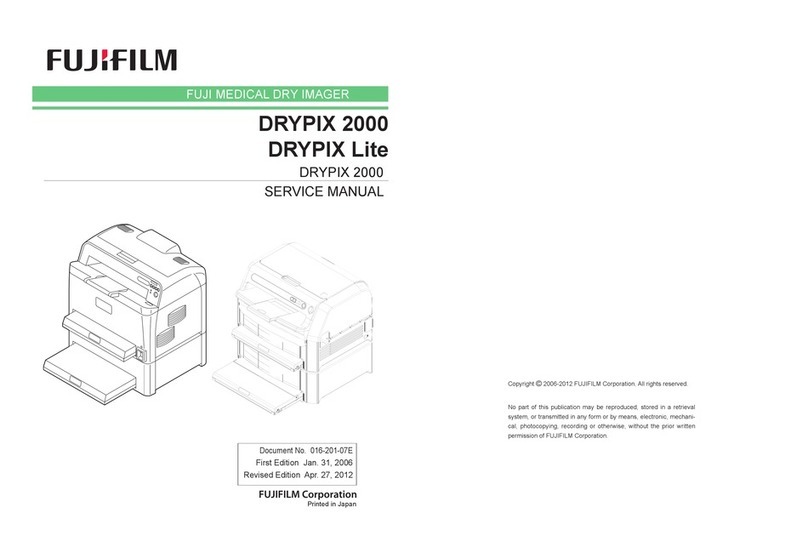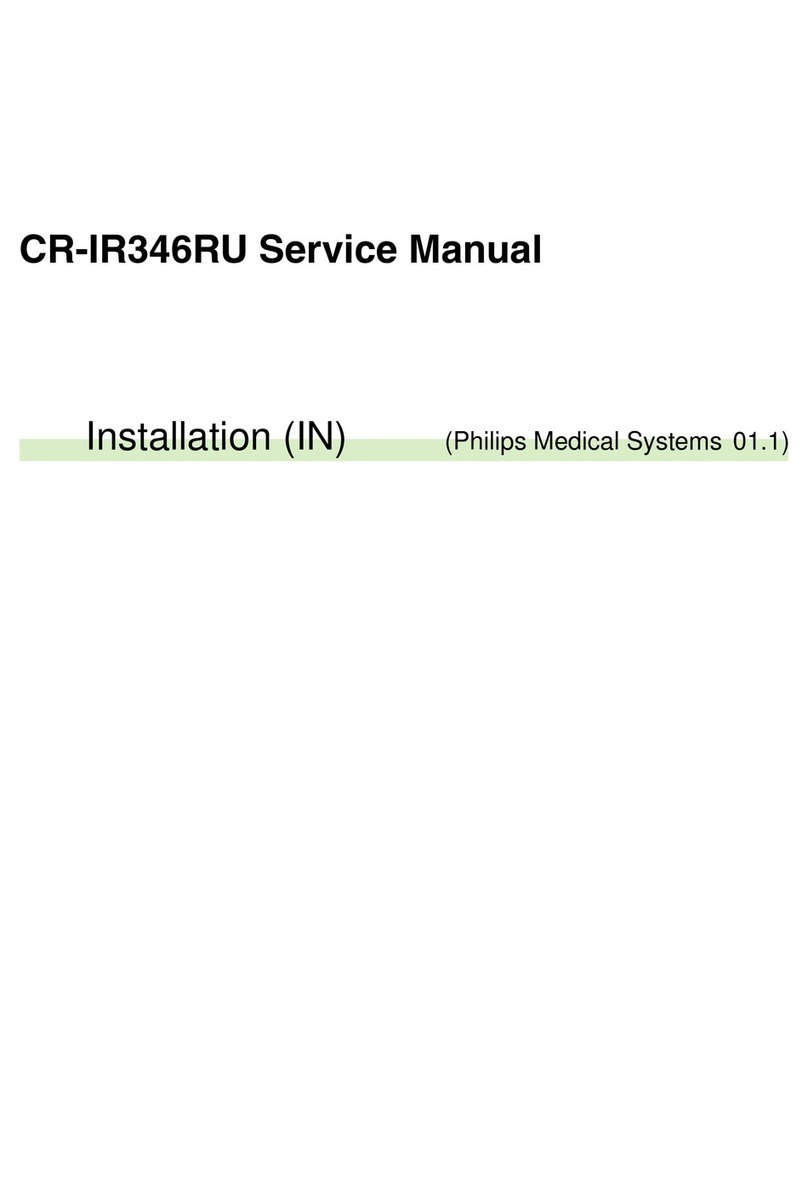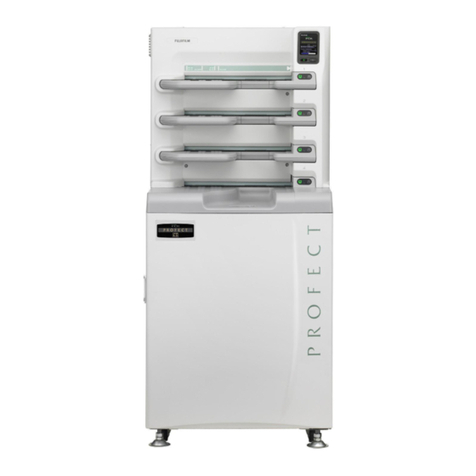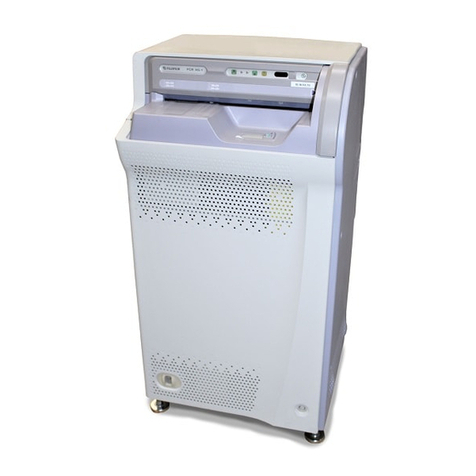
-1/2- 897N200791
For veterinary use only
Date of issue: 1/Mar/2018
Use after reading this “Instructions for Use”
FUJI DRI-CHEM IC CUPS
[Intended use]
Isolation and collection of plasma from the whole blood.
[Principle]
This equipment is used to extract plasma from whole blood using
separation. Remove the needle from the syringe after a blood sample is
collected, insert it in the straw coated on the inside with lithium heparin
as anticoagulant agent, and inject the whole blood into the cup. The
anticoagulant agent inside the cup will dissolve to preserve the whole
blood. By rotating the cup containing separating agent, only plasma
samples are collected in the cup, while blood cells separate in the gap.
[Composition]
The Composition of FUJI DRI-CHEM
IC CUPS is shown in the illustration at
the right.
Straw : polypropylene
Inner side : polyolefin
Cup : polystyrene
Anticoagulant: Heparin lithium
[Additional special equipment]
Analyzer : FUJI DRI-CHEM ANALYZER (with the IC function)
[Storage and shelf life]
1. Storage: Store the IC cup between 1-32°C (34-89°F).
Keep the IC cup away from direct sunlight and condensation.
Do not store the IC cup at an angle or upside down
2. Expiry date is printed on the carton.
After opening the packaging, use IC cups within three months
during which you may store the cups as is in the tray and use the
carton or a similar item to avoid contamination.
Before storage, write the date on the opening date field of the
label, and then affix the label to the lateral side of the tray.
[Warning and precautions]
1. Do not reuse a used IC cup.
2. The plasma separated with this product should be measured only
with the FUJI DRI-CHEM ANALYZER (with the IC function). Do not
use it for measurement with other FUJI DRI-CHEM measuring
devices or other methods.
3. Methods not in this documentation are not guaranteed.
4. Carefully read “INSTRUCTION MANUAL” for FUJI DRI-CHEM
ANALYZER to be used before use.
5. Use a syringe with a luer-slip tip that complies with ISO 594-1.
Otherwise, sample may leak from the interlock section of the syringe
and straw.
6. When drawing blood with a syringe, use a plain syringe. When
injecting whole blood from a syringe into a cup, inject through the
straw interlocked to the cup. The inside of the straw is coated with
heparin, which prevents the coagulation of blood.
7. When collecting blood directly into a heparin tube, use a heparin Li
tube. Use 40 units or less of heparin per mL of blood. Do not use a
vacuum blood collection tube as there is a risk of hemolysis. When
dispensing whole blood to a cup, remove the straw interlocked with
the cup, and then dispense directly into the cup.
8. When pouring whole blood into a cup, pour slowly for three seconds
or longer. Sudden pouring of whole blood may result in scattering,
hemolysis, or coagulation due to the insufficient dissolution of
heparin in the straw.
9. Pour the collected blood to the IC cup immediately. If time passes
after the blood was drawn, the measured values may be affected.
10. After pouring the whole blood into the cup, start centrifugal
separation immediately without shaking the cup. If whole blood is
left standing for a long time, evaporation causes inaccurate
measurement results.
11. When the remaining plasma has hemolyzed after measurement,
make a comprehensive evaluation based on, for example, other
related study results and clinical conditions. If necessary, discard
the sample, draw blood again, and then measure again.
12. For rerunning the plasma samples obtained using FUJI DRI-CHEM
IC CUPS, execute measurement again in rerunning mode just after
the end of the first measurement without removing the IC cup from
the analyzer. To store the plasma, transfer it without delay to FUJI
PLAIN TUBE. It cannot be stored inside the IC cup. Execute also
measurement in rerunning mode to rerun the plasma transferred to
FUJI PLAIN TUBE.
13. Do not use the IC cup if the package is damaged or if the cup fell.
14. When handling this product and whole blood, be certain to prevent
contamination.
15. Some of the separating agent inside the IC cup may flow to the
bottom of the cup. However, this does not affect the quality of the
product and the product can still be used.
16. Used IC cups are categorized as infectious waste. Make sure to
dispose of them in accordance with the Waste Disposal Law and
other related regulations, which prescribe the proper method of
disposal, such as incineration, melting, sterilization or disinfection.
[Sample requirements]
1. FUJI DRI-CHEM IC CUPS is designed only for dogs and cats whole
blood use.
2. For the sample, use 600 through 800 µL of whole blood with a
hematocrit value (Hct) of 55% or less. In the case of 800 µL of Hct
55%, approximately 250 µL of blood plasma can be obtained.
With values of Hct 55% or 800 µL or higher, centrifugal separation is
insufficient, and it may not be possible to obtain correct
measurement results.
When the amount is less than 600 µL, the blood plasma volume is
insufficient, and measurement may not be possible.
3. In the case of samples in which clots or fibrin have formed in whole
blood, centrifugal separation causes hemolyzation, and it may not
be possible to obtain correct measurement results.
4. Samples that include foreign matter, body tissue, or condensate in
whole blood may provide inaccurate measurement results.
5. Plasma with excessive fat and chylous samples may provide
inaccurate measurement results.
6. Measurements of samples with blood diseases such as hemolytic
anemia or thrombosis may provide inaccurate measurement results.
Inside anticoagulant
coating
Cup
Gap
Straw
Separating agent

























